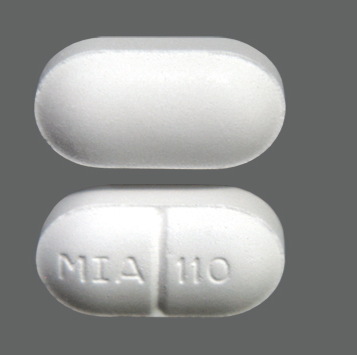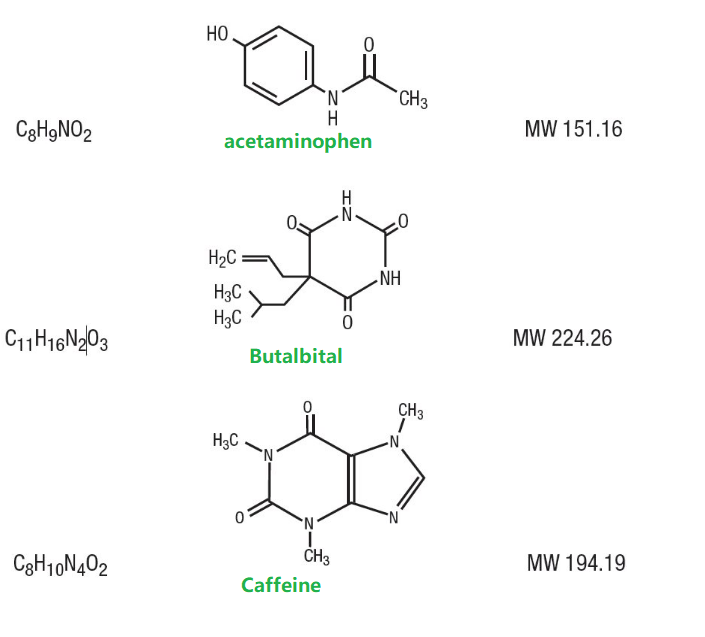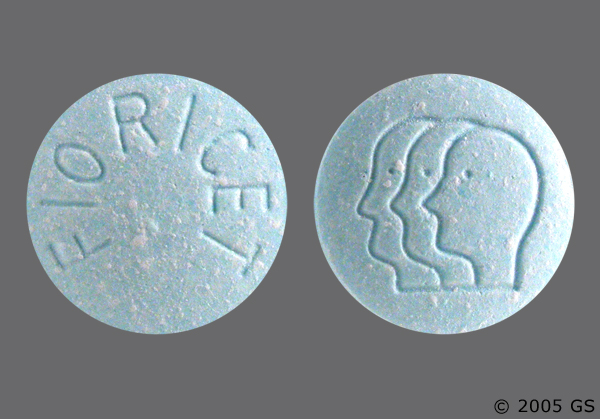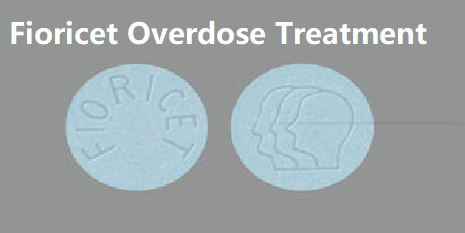Generic Fioricet ( White or Blue) 180 tab – $229
Welcome to buyfioricethere.com, your trusted source of prescription medications. Fioricet cheap only employs highly qualified pharmacists and us licensed doctors. As you know, all US licensed pharmacists dare not send you prescriptions without valid US doctors’ prescriptions, besides, they can not send you prescriptions without the lawyer’s suggestion. We all know DEA list fioricet (Butalbital, Acetaminophen, caffeine ) as Exempt Prescription and not controlled substance.
All Pharmacies associated are licensed to distribute in the states, you can be 100% sure to receive the same quality medication that you get from your local drug stores. To assure confidentiality and privacy our US licensed Pharmacy will fill and ship your prescription in a discreet package.
The US licensed pharmacies in our network never sell controlled substances. We will send you order ID and tracking ID together within two business days after you placed your orders. Please ignore any call from call centers and we never call customers to refill orders.
Upon receiving a valid prescription of the product you fill. Our US licensed pharmacies will check your address and health conditions. If everything is OK, the information will delivered to a US licensed doctor, after the doctor reviewed your health conditions and approved it, it will send back to the pharmacies and the US licensed pharmacists will review it and approve the prescriptions. The last step is to print label and issue tracking ID. At least six steps will be involved to fill your order. We cannot stop the fill process once it begins.
Fioricet is the best headache reliever. By patient experience, it is valid for tension headache, migraine, cluster headache, and all kinds of headaches.

Fioricet is supplied in hard-gelatin capsule form for oral administration.
Each capsule contains the following active ingredients:
Butalbital, USP……………………50 mg
Acetaminophen, USP…………….300 mg
Caffeine, USP……………………..40 mg
Inactive Ingredients: sodium lauryl sulfate, talc, microcrystalline cellulose, stearic acid, FD&C red # 40, titanium dioxide, FD&C blue # 1,FD&C yellow # 6, gelatin.
Fioricet is a combination medication containing butalbital, acetaminophen, and caffeine. It’s used to treat tension headaches, but can become habit-forming. It can also worsen headaches if used too frequently, so it’s not a first-choice option for treating tension headaches.
How Fioricet Works?
Fioricet is a combination of three medications that help relieve pain caused by tension headaches (headaches that are generally related to stress and cause muscle tightness and pain around your forehead and neck).
-
- Butalbital is a barbiturate that works in your brain to help you relax.
- Acetaminophen is a pain reliever. It stops the production of certain chemicals in the brain that cause pain.
- Caffeine is an adenosine antagonist. It blocks a natural chemical in your body called adenosine. It’s unclear exactly how caffeine works to treat headaches, but it’s thought to boost the pain-relieving activity of acetaminophen.

Butalbital (5-allyl-5-isobutylbarbituric acid), is a short to intermediate-acting barbiturate of molecular weight 224.26. It has the following structural formula:

Acetaminophen (4´-hydroxyacetanilide), is a non-opiate, non-salicylate analgesic and antipyretic of molecular weight 151.16. It has the following structural formula:

Caffeine (1,3,7-trimethylxanthine), is a central nervous system stimulant of molecular weight 194.19. It has the following structural formula:

What is Fioricet Used For?
-
- Tension headaches
Fioricet is prescribed to treat both migraine and tension-type headaches, although it has not been approved to treat migraines specifically. Fioricet is not often used as an initial medication, but it can be prescribed off-label for migraine in some cases.
Can Fioricet Treat Migraine?
Fioricet is FDA-approved to treat tension headaches. The FDA has not approved its use to treat migraine, but some doctors prescribe it for that purpose. When doctors prescribe a drug for something other than its approved use, it’s called off-label use.
Some people do find it works for migraine. Still, there’s not a lot of evidence to support its use. A 2015 review by the American Headache Society analyzed 15 years of research into different migraine treatments. The study grouped treatments into three levels, based on the amount of evidence to support each treatment’s use. Medications that contained butalbital, like BAC, were at the lowest level.

The study concluded that there was not enough clinical evidence to support the use of drugs like BAC to treat migraine. The authors recommended that doctors choose first from the wealth of options with stronger evidence.
The American Academy of Neurology suggests that medications like BAC be used only as a last resort. Most research suggests that, for most people, the risks outweigh the benefits.
Fioricet Dosage Forms
capsule : 50mg/300mg/40mg50mg/325mg/40mg
tablet : 50mg/325mg/40mg50mg/500mg/40mg
What Should I Avoid While Taking Fioricet?
 This medication can cause side effects that may impair your thinking or reactions. Be careful if you drive or do anything that requires you to be awake and alert.
This medication can cause side effects that may impair your thinking or reactions. Be careful if you drive or do anything that requires you to be awake and alert.
Avoid drinking alcohol. It may increase your risk of liver damage while taking acetaminophen.
Ask a doctor or pharmacist before using any other cold, allergy, pain, or sleep medication. Acetaminophen (sometimes abbreviated as APAP) is contained in many combination medicines. Taking certain products together can cause you to get too much acetaminophen which can lead to a fatal overdose. Check the label to see if a medicine contains acetaminophen or APAP.
While you are taking this medication, avoid taking diet pills, caffeine pills, or other stimulants (such as ADHD medications) without your doctor’s advice.
Dosage and Indications
Adults: 1 or 2 capsules or tablets PO every 4 hours as needed. Max: 6 capsules or tablets/day.
For the acute treatment of migraine†
Oral dosage (capsules or tablets containing 50 mg of butalbital, 325 mg of acetaminophen, 40 mg of caffeine)
Adults:1 capsule or tablet PO once. Guidelines classify butalbital; acetaminophen; caffeine as having possible efficacy for the treatment of acute migraine.
Maximum Dosage
Butalbital 300 mg per day PO, acetaminophen 4 grams per day PO, and caffeine 240 mg per day PO.
Butalbital 300 mg per day PO, acetaminophen 4 grams per day PO, and caffeine 240 mg per day PO.
Butalbital 300 mg per day PO, acetaminophen 4 grams per day PO, and caffeine 240 mg per day PO.
12 years: Butalbital 300 mg per day PO, acetaminophen 4 grams per day PO, and caffeine 240 mg per day PO.
Less than 12 years: Safety and efficacy have not been established.
Safety and efficacy have not been established.
Fioricet Overdose and Fioricet Overdose Treatment
Following an acute overdosage of butalbital, acetaminophen, and caffeine, toxicity may result from the barbiturate or the acetaminophen. Toxicity due to caffeine is less likely, due to the relatively small amounts in this formulation.
Fioricet Overdose Signs and Symptoms
Toxicity from barbiturate poisoning includes drowsiness, confusion, and coma; respiratory depression; hypotension; and hypovolemic shock.
In acetaminophen overdosage: dose-dependent, potentially fatal hepatic necrosis is the most serious adverse effect. Renal tubular necrosis, hypoglycemic coma, and coagulation defects may also occur.
Early symptoms following a potentially hepatotoxic overdose may include: nausea, vomiting, diaphoresis, and general malaise. Clinical and laboratory evidence of hepatic toxicity may not be apparent until 48 to 72 hours post-ingestion.
Acute caffeine poisoning may cause insomnia, restlessness, tremor, and delirium, tachycardia and extrasystoles.
Fioricet Overdose Treatment
A single or multiple drug overdose with this combination product is a potentially lethal polydrug overdose, and consultation with a regional poison control center is recommended. Immediate treatment includes support of cardiorespiratory function and measures to reduce drug absorption.
Oxygen, intravenous fluids, vasopressors, and other supportive measures should be employed as indicated. Assisted or controlled ventilation should also be considered.
Gastric decontamination with activated charcoal should be administered just prior to N-acetylcysteine (NAC) to decrease systemic absorption if acetaminophen ingestion is known or suspected to have occurred within a few hours of presentation. Serum acetaminophen levels should be obtained immediately if the patient presents 4 hours or more after ingestion to assess potential risk of hepatotoxicity; acetaminophen levels drawn less than 4 hours post-ingestion may be misleading. To obtain the best possible outcome, NAC should be administered as soon as possible where impending or evolving liver injury is suspected.
Intravenous NAC may be administered when circumstances preclude oral administration.
Vigorous supportive therapy is required in severe intoxication. Procedures to limit the continuing absorption of the drug must be readily performed since the hepatic injury is dose dependent and occurs early in the course of intoxication.
-
-
- Fioricet is a combination pain-reliever (analgesic) containing acetaminophen, butalbital, and caffeine.
- Experts aren’t sure exactly how acetaminophen works, but suspect it blocks a specific type of cyclo-oxygenase (COX) enzyme, located mainly in the brain.
- Butalbital belongs to the class of medicines called barbiturates. When used for pain due to tension headaches experts believe it works by relaxing muscle contractions and causing sedation via an enhancement of the inhibitory effects of GABA (a neurotransmitter that regulates communication between brain cells).
- Caffeine is thought to enhance the pain-relieving effects of acetaminophen by up to 40%. In addition, it has vasoconstrictive properties, narrowing blood vessels in the brain thereby decreasing blood flow and oxygen tension (before a headache or a migraine, blood vessels tend to enlarge). This also helps to relieve pain.
- Fioricet belongs to the class of medicines known as barbiturates because it contains butalbital. It may also be called a combination analgesic.
-
Fioricet is a controlled medication in some states, because it contains butalbital.

Because butalbital can make people feel relaxed, there’s a risk of misuse, meaning people might take the medication for a different reason or in a different way than it’s prescribed. Taking butalbital for a long time can also cause physical dependence, where more medication is needed to get the same relaxed feeling. Physical dependence can lead to serious withdrawal symptoms if you lower the dose too quickly or if you stop the medication suddenly. These symptoms include seizures, delusions, restlessness, trouble sleeping, and shakiness. Because of these dangerous risks with butalbital use, some state governments place strict regulations on Fioricet to lower the risk of misuse, dependence, and related consequences.
Brand Names of Fioricet
-
-
- Alagesic®
- Americet®
- Anolor®
- Anoquan®
- Arcet®
- Dolgic®
- Dolmar®
- Endolor®
- Esgic®
- Ezol®
- Femcet®
- Fioricet®
- Fiorpap®
- G-1®
- Ide-cet®
- Isocet®
- Margesic®
- Medigesic®
- Minotal®
- Mygracet®
- Nonbac®
- Pacaps®
- Pharmagesic®
- Quala Cet®
- Repan®
- Tenake®
- Tencet®
- Triad®
- Two-Dyne®
- Zebutal®
-
Fioricet FAQs
How long does it take to get my order of Fioricet?
Your order will arrive between 1-3 business days after your tracking ID is sent to you. Normally 5 -7 business days after you have placed your order.
How do you ship my order of Fioricet?
Nearly All packages are delivered by USPS. We collect Money by COD. All package must be paid by USPS Money order.
What is the cost of delivery of Fioricet?
Free. All the delivery fee is included in the drug prices.
What is the active ingredients of Fioricet ?
Fioricet is a prescription drug often used to treat tension headaches that contains the following active ingredients:
-
-
-
-
- Acetaminophen 300 mg
- Butalbital 50 mg
- Caffeine 40 mg
-
-
-
Each of these three ingredients stays in the body for different lengths of time, meaning that Fioricet can stay in the system for up to eight days.
Is Fioricet Addictive?
Although it’s only a prescription headache medication, Fioricet has the potential to cause addiction. If a person follows their prescription guidelines and uses the medication correctly, the risks of addiction are low. However, if someone takes too much Fioricet, they may develop tolerance to its effects. A person with tolerance to a certain dose of Fioricet will require higher doses of the medication to alleviate their headaches.
When a person with tolerance starts to take more Fioricet, possibly by obtaining more prescriptions, they may eventually become dependent on it. In other words, they may feel unable to get through the day without taking Fioricet; if they stop, they will experience symptoms of withdrawal. These symptoms arise because their body has grown accustomed to Fioricet in high doses.
If a Fioricet-dependent person attempts to weather withdrawal alone, it’s likely they will take Fioricet again just to relieve the symptoms of withdrawal. This is a hallmark characteristic of addiction. Anyone who compulsively abuses Fioricet to avoid withdrawal likely has an addiction to Fioricet. Additionally, people with an addiction to Fioricet will experience cravings for the medication which further compel them to keeping using it.
Moreover, the ingredient Butalbital is an addictive substance in its own right. Butalbital can cause someone to get “high” because it’s a Central Nervous System (CNS) Depressant. Since Butalbital is part of Fioricet, it is possible for someone to abuse Fioricet as a recreational drug. At high doses, Fioricet can intoxicate a person in a manner similar to alcohol. People who abuse Fioricet for this purpose have as much of a risk of developing an addiction as they would have if they repeatedly used an illegal drug.
Can I stop taking Fioricet if my headache goes away?
If you’ve been taking Fioricet regularly, don’t stop taking it without talking to your healthcare provider first. Suddenly stopping it can lead to serious withdrawal symptoms, such as seizures, hallucinations, and worsening of headaches. Talk to your healthcare provider to slowly and safely lower your dose to help limit withdrawal symptoms.
Can I drink alcohol while taking Fioricet?
No, it’s not recommended to drink alcohol while taking this medication. Combining alcohol and Fioricet can further slow down your brain activity and lead to breathing problems, excessive sleepiness, confusion, dizziness, coma, and even death. Drinking alcohol can also raise your risk of liver injury with this medication. Let your healthcare provider know if you have a history of alcohol use before starting Fioricet.
Is it safe to use Fioricet during pregnancy?
There isn’t enough information available to know if Fioricet is safe to take during pregnancy. It’s also unknown if this medication can cause harm to your unborn baby or affect your chances of becoming pregnant. If you’re pregnant or planning on becoming pregnant, discuss the risks and benefits of using Fioricet with your healthcare provider.
What makes Fioricet a controlled medication in some states?
Fioricet is a controlled medication in some states, because it contains butalbital. Because butalbital can make people feel relaxed, there’s a risk of misuse, meaning people might take the medication for a different reason or in a different way than it’s prescribed. Taking butalbital for a long time can also cause physical dependence, where more medication is needed to get the same relaxed feeling. Physical dependence can lead to serious withdrawal symptoms if you lower the dose too quickly or if you stop the medication suddenly. These symptoms include seizures, delusions, restlessness, trouble sleeping, and shakiness. Because of these dangerous risks with butalbital use, some state governments place strict regulations on Fioricet to lower the risk of misuse, dependence, and related consequences.
Why is Fioricet a controlled medication in some states and not others?
State laws can differ when categorizing Fioricet as a controlled medication. In some states, whether Fioricet is controlled or not depends on how much butalbital it contains compared to other ingredients and how likely the medication can cause the dangerous risk of misuse and dependence. In other states, Fioricet is categorized as a controlled medication solely based on the fact that butalbital alone is a controlled medication.
Duration of Effects of Fioricet
The effects of Fioricet last for about 2–4 hours. It is normally prescribed as one or two capsules taken by mouth every 4 hours.
Fioricet Half-Life
The half-life of a drug refers to the time it takes for half of the dose to be eliminated from the bloodstream. Each ingredient in Fioricet has a unique half-life:
-
- Acetaminophen: 2 hours
- Butalbital: 36 hours
- Caffeine: 6 hours
The body takes about five half-lives to eliminate a drug fully. Acetaminophen leaves the body in 10 hours and caffeine in 30 hours.
Butalbital has the longest half-life of the ingredients in Fioricet, so the elimination time of the drug is dependent on butalbital. Butalbital takes 180 hours, or almost eight days, to leave the body.
How Long Will Fioricet Show in a Drug Test?
Most standard drug tests will look for barbiturates, including the butalbital in Fioricet. Different types of drug tests may show traces of Fioricet for varying lengths of time.
Urine
Several factors affect the detection window of Fioricet, but most urine tests will pick up butalbital use 3–7 days from the last dose.
Blood
Butalbital has a very long half-life and is detectable in blood for roughly 8 days. However, blood tests are not frequently used to detect drug use because they are expensive and invasive.
Saliva
Butalbital, one of the main active ingredients in Fioricet, is detectable in saliva for 2–3 days.
Hair
All drugs have a similar window of detection in hair tests. During use, butalbital deposits into hair follicles and becomes locked in the hair. Most tests take 1.5 centimeters (cm) of hair because Fioricet can be detected in hair for 90 days.
Factors Affecting How Long Fioricet Stays in Your System
There are several factors that influence how long Fioricet stays in your system, including:
-
-
- Amount used
- Frequency of use
- Age
- Overall health
-
The detection window for Fioricet is most affected by how much of the drug someone uses and how often. Butalbital takes a long time to metabolize, so it will accumulate after only a few doses and remain detectable in the body for sometimes over a week.
False Positives for Fioricet
Non-steroidal anti-inflammatory drugs (NSAIDs) like ibuprofen and naproxen can trigger false positives for butalbital, but this happens less than 1% of the time.
A positive drug test will usually be sent to another lab for a confirmation test called gas chromatography-mass spectrometry (GC-MS). GC-MS tests are very sensitive and specific, so they will not typically report false-positives.
How Fioricet Is Broken Down in the Body
Butalbital is mostly filtered out of the blood by the kidneys and removed in the urine. Acetaminophen and caffeine are both metabolized and removed by the liver.
How to Get Fioricet Out of Your System
The only way to remove drugs from the body is to wait the appropriate amount of time. Metabolizing organs, like the kidney for butalbital, require time to eliminate drugs.
Key Points: How Long Does Fioricet Stay in Your System?
-
- Fioricet contains the three drugs acetaminophen, butalbital and caffeine
- Butalbital can be detected in drug screening tests
- Butalbital takes many days to leave the body, sometimes over a week
- Most drug tests can detect butalbital for one week or longer
The only guaranteed way to pass a drug test is by not taking the drug. If you or a loved one struggle with an addiction to Fioricet, call The Recovery Village Ridgefield to learn more about treatment options.
The Symptoms Of Withdrawal
In most cases, Fioricet withdrawal lasts anywhere from 8 hours to three days after the last dose. Withdrawal is the biggest obstacle to overcoming dependence on Fioricet, which is why rehab centers provide detox programs so that people can safely undergo the withdrawal cycle without the risk of relapse. According to research, it is best to undergo withdrawal under medical supervision because some withdrawal symptoms are dangerous.
Rebound headaches are the most common symptoms of Fioricet withdrawal. Other symptoms of withdrawal include:
-
-
- Anxiety
- Dizziness
- Insomnia
- Muscle spasms
- Nausea and vomiting
- Rapid emotional changes
- Seizures (in rare cases)
- Weakness
-

